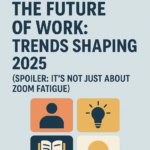The COVID-19 coronavirus, first identified in China’s Wuhan district in December 2019, has since become a global threat to public health. After quickly reaching 140 countries, the novel coronavirus was declared as a global pandemic by the World Health Organization (WHO). Today, the deadly disease is affecting 210 countries and territories around the world, not just as a serious health concern, but also as a disruption to global supply chains.
Jean-Patrice Delia, director of operations for Montreal-based Thermogen Power Services explains how COVID-19 is impacting the power sector and what some companies are doing to overcome these issues.
Coronavirus and the Power Sector
As a provider of critical infrastructure, the power sector has a strong track record when it comes to preparing for emergencies. But, even the most prepared and thoroughly tested business continuity plans should be adaptable to fully address the fast-moving and unknown variables of an outbreak like COVID-19, says Jean-Patrice Delia.
The pandemic we are facing has impacted this industry in both direct and indirect ways. For example, illness and social distancing policies in the workforce has directly impacted generation and supply and reduced economic activity caused by city lockdowns. This has affected business operations and the public at large and has indirectly impacted the demand for power services.
Impact of Power Demand
The next few weeks are crucial, as most impacts will likely be caused by reduced economic activity. Long-term impacts are highly uncertain and will likely depend on the pandemic’s ultimate toll on public health and the economy, notes Jean-Patrice Delia.
In many countries overseas, including the UK and Germany, safety measures have been put in place to guarantee the continuation of operations. The German energy industry is coping well, but it, among many others, will see a decline in industrial production over the coming weeks.
While many major power services have successfully shifted to remote operations, a drop in nuclear demand will cause unprecedented shortfalls in power plant revenue.
Reduced electricity demand could persist for months. If demand and prices remain low for extended periods of time, some power plants may become unprofitable, notes Jean-Patrice Delia.
Although it is likely household demand for power will rise with entire families in self-isolation, reduced industrial production could have negative economic impacts on the power services sector.
Delays in renewable energy production
COVID-19 has also posed major concerns for renewable energy. In the renewable energy sector, global supply chains are considerably slowing down production. Sectors such as the global wind industry are already seeing logistical delays in the development of new wind farm projects, which could cause developers to miss the deployment deadlines in countries’ auction systems and thus face major financial penalties.
Delays in project development for the solar power industry is also a concern, especially because PV panel exports from China were stopped during the height of the COVID-19 lockdowns in the first two months of the year.
Although production has resumed in China, a backlog of orders already in the system could cause further delays in distribution in the near future.
Jean-Patrice Delia’s final thoughts
The global outbreak of COVID-19 has threatened supply chains in many sectors, including power and renewable energy. There is no denying that the short-term road for the power sector is uncertain, but optimism for the long-term will remain, especially because the power sector offers increasingly compelling competitive advantages, says Jean-Patrice Delia.












